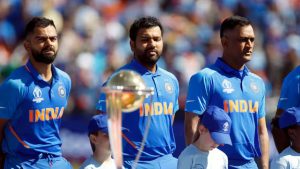
In an unexpected yet strategic move, South Africa chose to bat first against Bangladesh in their T20 World Cup match in New York on Monday. The decision was a nod to Bangladesh’s formidable bowling attack, particularly their spinners and cutters, which are highly effective on slow pitches. Player of the Match, Heinrich Klaasen, explained the rationale behind this choice, emphasizing the difficulty of chasing low totals against such a skilled bowling lineup.
“Third game on the wicket,” Klaasen noted. “These guys are incredible when the wicket becomes slow. So that was the biggest reason why we didn’t want to chase 120. The wicket was definitely better than other games. But given Bangladesh, when pressure is on, and they have to go into cutters, they’ve got some of the world’s best cutter bowlers and their spinners are high quality.”
Despite this strategic insight, South Africa found themselves in a precarious position at 23 for 4. The team, however, adopted a steady approach reminiscent of ODI cricket, aiming for a run-a-ball pace rather than the typical explosive T20 strategy. This measured approach, inspired by David Miller’s performance in a previous match against the Netherlands, paid off.
“I think David [Miller] showed us in the previous game how to bat on this wicket and it’s almost a similar way that we bat in the middle overs in a one-day game,” Klaasen explained. “So, our mindset is not even close to T20 cricket. You just want to get in and find a way to bat at a run a ball. And we know you’re one or two hits away just for going over the run-a-ball strike-rate.”
On the other side, Bangladesh faced challenges in their chase, particularly with early wickets falling and never quite getting ahead of the required rate. Their standout performer, Towhid Hridoy, acknowledged the missed opportunities and the need to sustain the momentum longer.
“From that position, I should have finished the match,” Hridoy reflected, considering the possibility of pushing the rate earlier. “It’s difficult for new batsmen to adjust to the conditions. In that position, I should have finished the match.”
Hridoy’s dismissal in the 18th over left Bangladesh needing 21 runs off 17 balls with five wickets in hand. Despite being in a generally favorable position for a chase, the slow pitch and outfield proved challenging.
In close matches, small moments often carry significant weight. Hridoy pointed out some critical umpiring decisions that, while not necessarily wrong, highlighted the fine margins in play. “See, ICC rule is not in my hands, but at that time those four runs were very important for us,” he said, referring to an lbw call that was overturned but cost them potential leg-byes. “The umpires are also human beings, and they could have made a mistake. But we had two-three more wides, which were not given. So, in a match like this, where hardly a run is being made in a low-scoring match, one or two runs are a big factor.”
Ultimately, South Africa’s strategic decision to bat first and their disciplined approach paid off, securing a narrow victory over Bangladesh and highlighting the tactical depth and adaptability required in high-stakes cricket.
#t20 #worldcup #t20worldcup #cricket #news #cricketnews #sportznews #newssportz #southafrica #klaasen #saouthafricavsbangladesh #savsban




